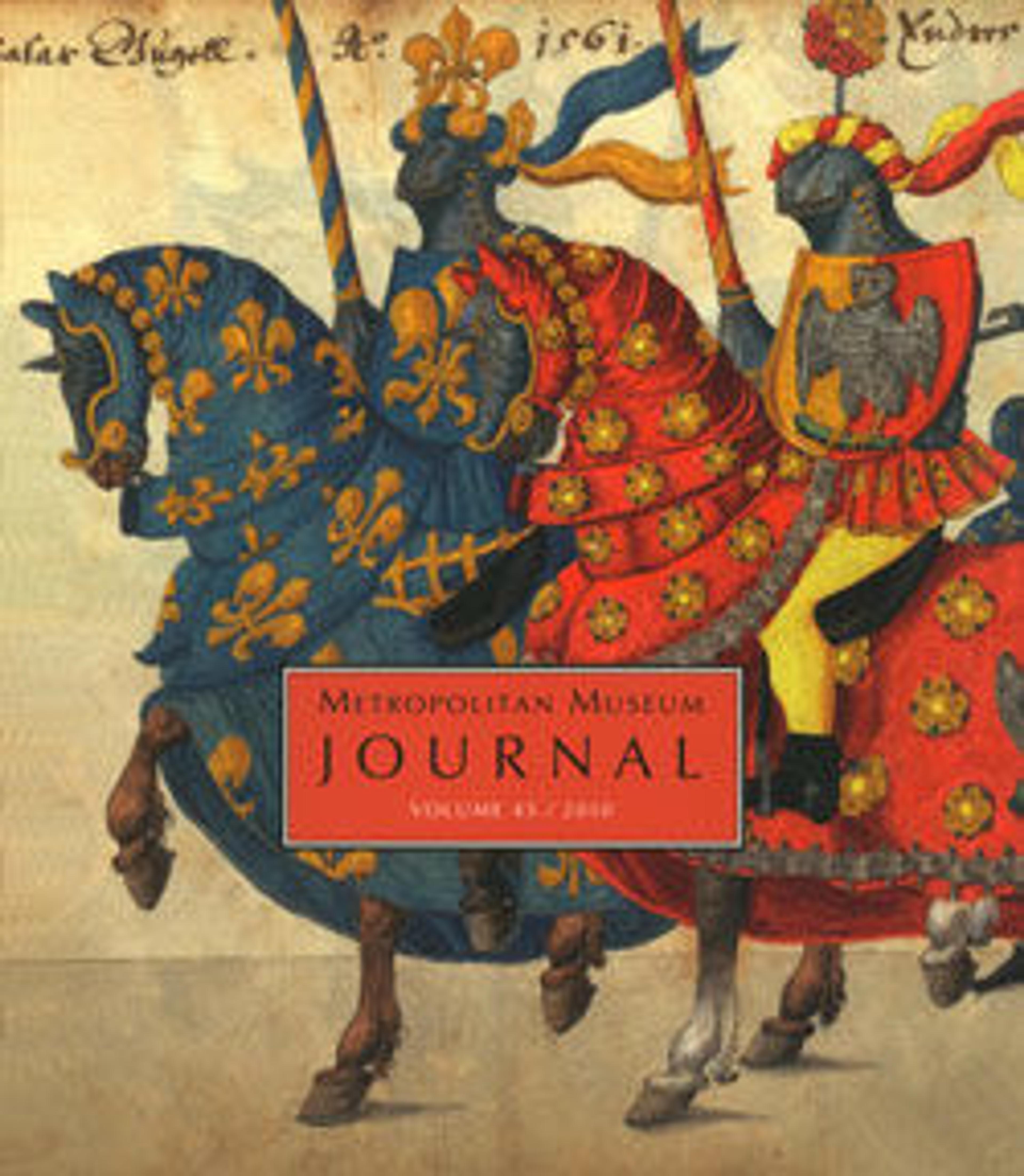Fragmentary terracotta column-krater (bowl for mixing wine and water)
Restituted
This artwork was restituted in June 2025. It is no longer in the museum’s collection.One side, Hephaistos on a donkey accompanied by satyrs and maenads
Under one handle, satyrs filling a krater, satyrs and maenads
Under the opposite handle, satyr filling a vase at a volute-krater, maenad with wineskin
Below, Herakles driving the cattle of Geryon
The Metropolitan Museum of Art is exceptionally fortunate in being able to juxtapose two monumental depictions of the same subject, on the same shape, by the same superlative artist.
The complete column-krater 31.11.11 presents the two protagonists, Hephaistos and Dionysos, as focal points on opposite sides. The gods are thoroughly integrated, however, into the line of satyrs and maenads who advance at a deliberate pace; one can almost hear their heavy steps. While every figure is characterized by his pose and painstakingly articulated, there are no identifying inscriptions. And although there is the paraphernalia of drinking—wineskins and drinking horns—everyone is sober.
The fragmentary krater L.2025.23.3a–eee offers a decidedly more vivacious interpretation. However incomplete, the sections below the handles make clear that wine is being liberally dispensed, and the central portion with Hephaistos depicts some of the consequences. Moreover, there are numerous inscriptions giving the names of the figures and identifying the donkey. The well-preserved surface shows not only the fine incision but also the liberal application of red and white color.
The zone of cattle that circumambulate the krater below the main scene might appear to be simply the continuation of an earlier tradition. Through the addition of Herakles, however, the subject has been transformed into one of the hero's labors. Herakles journeyed to the distant home of the three-bodied Geryon and killed him in order to obtain his herd of cattle.
Under one handle, satyrs filling a krater, satyrs and maenads
Under the opposite handle, satyr filling a vase at a volute-krater, maenad with wineskin
Below, Herakles driving the cattle of Geryon
The Metropolitan Museum of Art is exceptionally fortunate in being able to juxtapose two monumental depictions of the same subject, on the same shape, by the same superlative artist.
The complete column-krater 31.11.11 presents the two protagonists, Hephaistos and Dionysos, as focal points on opposite sides. The gods are thoroughly integrated, however, into the line of satyrs and maenads who advance at a deliberate pace; one can almost hear their heavy steps. While every figure is characterized by his pose and painstakingly articulated, there are no identifying inscriptions. And although there is the paraphernalia of drinking—wineskins and drinking horns—everyone is sober.
The fragmentary krater L.2025.23.3a–eee offers a decidedly more vivacious interpretation. However incomplete, the sections below the handles make clear that wine is being liberally dispensed, and the central portion with Hephaistos depicts some of the consequences. Moreover, there are numerous inscriptions giving the names of the figures and identifying the donkey. The well-preserved surface shows not only the fine incision but also the liberal application of red and white color.
The zone of cattle that circumambulate the krater below the main scene might appear to be simply the continuation of an earlier tradition. Through the addition of Herakles, however, the subject has been transformed into one of the hero's labors. Herakles journeyed to the distant home of the three-bodied Geryon and killed him in order to obtain his herd of cattle.
Artwork Details
- Title:Fragmentary terracotta column-krater (bowl for mixing wine and water)
- Artist:Attributed to Lydos
- Period:Archaic
- Date:ca. 560 BCE
- Culture:Greek, Attic
- Medium:Terracotta; black-figure
- Dimensions:Height (height of main composition): 11 7/16 in., 25.8 mm (29 × 257.5 cm)
Height (height of frieze below): 3 3/4 in. (9.5 cm) - Classification:Vases
- Credit Line:Lent by the Republic of Italy
- Object Number:L.2025.23.3a–eee
- Curatorial Department: Greek and Roman Art
More Artwork
Research Resources
The Met provides unparalleled resources for research and welcomes an international community of students and scholars. The Met's Open Access API is where creators and researchers can connect to the The Met collection. Open Access data and public domain images are available for unrestricted commercial and noncommercial use without permission or fee.
To request images under copyright and other restrictions, please use this Image Request form.
Feedback
We continue to research and examine historical and cultural context for objects in The Met collection. If you have comments or questions about this object record, please contact us using the form below. The Museum looks forward to receiving your comments.
